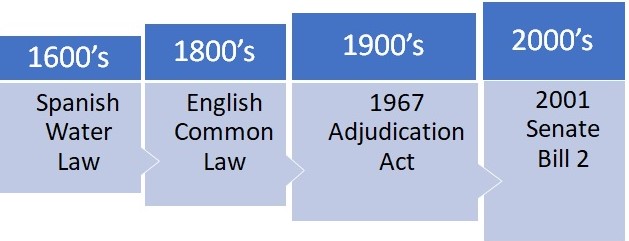 Water has been a cherished, regulated resource in Texas from the 1600’s when Texas was under the Spanish rule.
Water has been a cherished, regulated resource in Texas from the 1600’s when Texas was under the Spanish rule.
Water law in Texas began early in Texas history, when the San Antonio area was first settled by the Spanish. Spanish law determined that the rights to surface water from creeks, rivers, and lakes were riparian: that is, the landowners adjacent to a body of water had the right to determine how that water was used. This doctrine remained essentially unchanged even after Texas independence and statehood. However, the Texas Supreme Court noted as early as 1872 that riparian doctrine was unsuitable as settlement moved into the arid regions of West Texas and the Panhandle.
Beginning in the 1890s, Texas began to implement a legal doctrine known as prior appropriation. Simply put, prior appropriation means that the state issues water rights for surface water with multiple stakeholders. Rights may be assigned according to seniority among the permit holders, or allocated according to a complex formula between residential, industrial, and agricultural users. In 1913, the legislature created the Texas Water Commission (now the Texas Commission on Environmental Quality) to oversee water appropriations. Prior appropriation was implemented incrementally over many decades, and conflicts between permit holders and those with existing riparian rights were a source of numerous court cases well into the 1980s.
The legal complexities add to the challenge of managing this resource necessary for life and commerce, especially in times of extreme scarcity, when the water rights allocated to a particular stream exceed the amount of water available